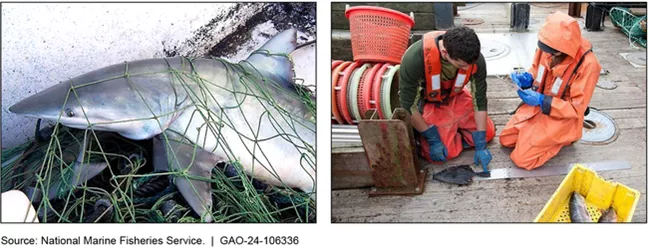Managing Federal Lands and Waters
Issue Summary
Multiple federal agencies manage the nation’s land and water resources. However, these agencies face challenges with protecting and managing these resources. The management of these resources is largely characterized by the struggle to balance the demand for greater use of these resources with the need to conserve and protect them for the benefit of future generations.
The federal government owns and manages approximately 650 million acres of land in the United States—about 30% of the nation’s total surface area. Four major federal land management agencies—the Department of Agriculture’s Forest Service and the Department of the Interior’s Bureau of Land Management (BLM), Fish and Wildlife Service (FWS), and National Park Service (NPS)—are responsible for managing about 95% of these lands. Other prominent federal agencies involved in natural resources management include the Bureau of Indian Affairs (BIA), the National Oceanic and Atmospheric Administration (NOAA), and the U.S. Army Corps of Engineers (the Corps).
Federal Lands Managed by the Forest Service, Bureau of Land Management, Fish and Wildlife Service, and National Park Service
Image

These agencies face a number of challenges with effectively managing the nation’s natural resources.
For instance:
- Deferred maintenance. Buildings, roads, and other structures on the federal government's public lands require billions of dollars to maintain each year. Agencies may defer maintenance projects to future years when funds are unavailable. In 2020, Congress established a fund to address deferred maintenance in FYs 2021-2025. The money—as much as $1.9 billion annually—is divided among 5 eligible agencies: 70% for NPS, 15% for the Forest Service, and 5% each to BLM, FWS, and the Bureau of Indian Education. Agencies reported they faced challenges to reducing deferred maintenance, such as construction supply chain issues and inflation, which have raised costs and delayed projects.
- Submerged lands. Alaska contains over 12,000 rivers and more than 3 million lakes that often serve as important transportation corridors due to Alaska’s limited highway system. Under federal law, a state owns submerged lands beneath waters that were navigable as of the date of statehood—1959 for Alaska. Two complex and time-consuming processes can be used for resolving the ownership of submerged lands. While ownership of specific submerged lands is being resolved, federal land management agencies have taken some steps towards managing these lands through an interagency workgroup. However, they have not developed a process for collaborative land management that involves the state. Such a process could reduce intergovernmental conflicts and uncertainties for the public and stakeholders, such as Alaska Native Corporations that own lands adjacent to waterways.
- Minimizing bycatch. The National Marine Fisheries Service (NMFS) tries to minimize bycatch—marine life unintentionally caught or harmed by fishing. Fisheries observers deploy on fishing vessels to count bycatch and NMFS uses this data to make bycatch estimates. But the percentage of fishing trips with observers varies, and estimates are less reliable for fisheries with fewer observers. For instance, only 2% of the fishing trips in the Gulf of Mexico shrimp trawl fishery have an observer. NMFS said that it needs more funding to recruit and retain observers, but it hasn't communicated those resource needs to Congress.
Shark Bycatch and Fisheries Observers Working aboard a Fishing Vessel
Image

- Harbor shelters. Jetties, breakwaters, and other coastal structures shelter harbor entrances so ships can safely navigate to land. The structures also protect coastlines from erosion during severe storms. The Army Corps of Engineers builds and maintains these structures to congressional specifications. For example, congressional authorization may set the length of a structure, and the Corps may not be able to adjust it for today's more frequent and severe storms. The Corps is also only currently authorized to consider these structures' navigational benefits—not environmental ones—when prioritizing repairs and maintenance.
A Collapsed Breakwater in Buffalo, NY, after Storms in 2019 (top), with Comparison to Earlier Condition (bottom)
Image

- Coral reefs. Coral reefs host rich marine ecosystems and protect coastlines from flooding and erosion—providing global benefits estimated to be worth trillions of dollars annually. But coral reefs face threats including ocean warming, disease, and tourism. The federal Coral Reef Conservation Program plays a key role in conserving and restoring coral reefs. The program promotes accountability and transparency in many ways but doesn't share full spending data or project results with Congress or others.

